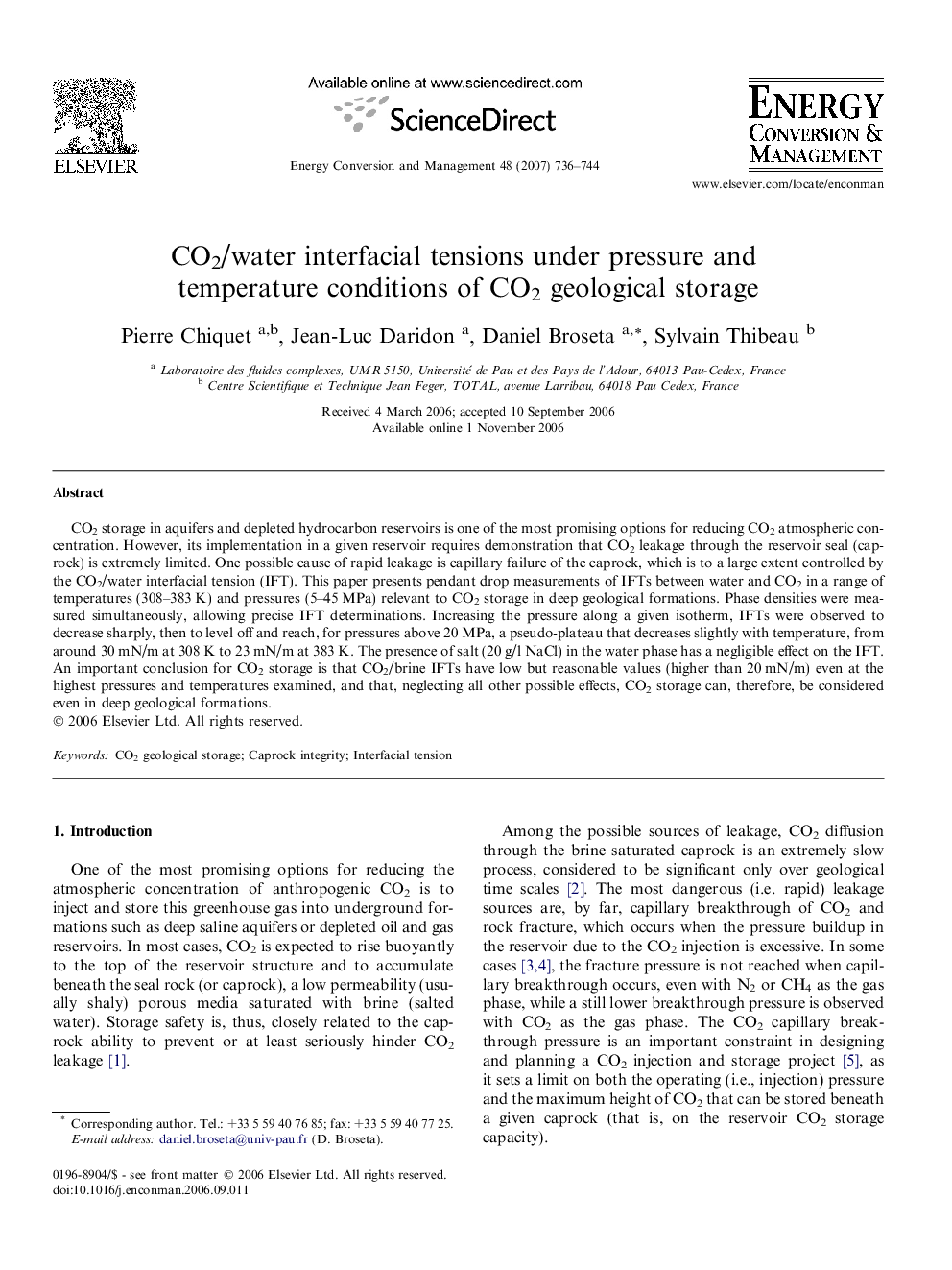| Article ID | Journal | Published Year | Pages | File Type |
|---|---|---|---|---|
| 766539 | Energy Conversion and Management | 2007 | 9 Pages |
CO2 storage in aquifers and depleted hydrocarbon reservoirs is one of the most promising options for reducing CO2 atmospheric concentration. However, its implementation in a given reservoir requires demonstration that CO2 leakage through the reservoir seal (caprock) is extremely limited. One possible cause of rapid leakage is capillary failure of the caprock, which is to a large extent controlled by the CO2/water interfacial tension (IFT). This paper presents pendant drop measurements of IFTs between water and CO2 in a range of temperatures (308–383 K) and pressures (5–45 MPa) relevant to CO2 storage in deep geological formations. Phase densities were measured simultaneously, allowing precise IFT determinations. Increasing the pressure along a given isotherm, IFTs were observed to decrease sharply, then to level off and reach, for pressures above 20 MPa, a pseudo-plateau that decreases slightly with temperature, from around 30 mN/m at 308 K to 23 mN/m at 383 K. The presence of salt (20 g/l NaCl) in the water phase has a negligible effect on the IFT. An important conclusion for CO2 storage is that CO2/brine IFTs have low but reasonable values (higher than 20 mN/m) even at the highest pressures and temperatures examined, and that, neglecting all other possible effects, CO2 storage can, therefore, be considered even in deep geological formations.
